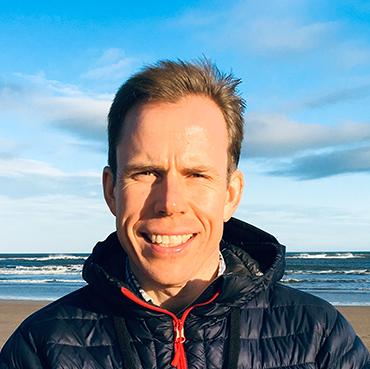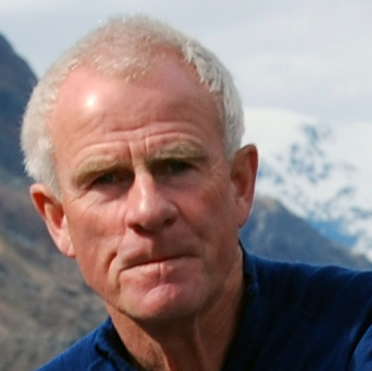About SCAPE
The award-winning SCAPE Trust is a Registered Charity and a Company established in 2001. We work with the public on the archaeology, history and past environments of the coastal zone of Scotland. We define the archaeology of the coastal zone as sites and historic landscapes that have a proximity to, or relationship with, the coast. We are particularly interested in remains threatened by coastal erosion.
We value the contribution that local communities bring to heritage projects and champion volunteering in our projects. Local volunteering is at the heart of our projects to research, rescue, interpret and highlight the heritage of Scotland’s coast.
The outcome of our work informs policy, provides evidence for good management, guides research and provides learning and interpretation resources. SCAPE is nationally recognised for our expertise in the heritage of coastal environments and internationally renowned for using innovative approaches to public involvement in the stewardship of heritage impacted by coastal processes.
SCAPE’s current activities are funded by Historic Environment Scotland’s Partnership Fund and supported by the University of St Andrews.
SCAPE is managed by a distinguished Board of Directors which includes field and maritime archaeologists, specialists in coastal geomorphology, historians, built heritage managers and scientists.
Meet our directors

Jim Hansom (Chair) is an Honorary Professor in Geographical and Earth Sciences at the University of Glasgow. A coastal geomorphologist with extensive research and consultancy experience in coastal environmental change, coastal erosion and coastal zone management, his recent research has included developing methodologies to analyse the rates of change on Scottish beaches and dunes and he is now working on clarifying the mechanisms of extreme wave impact on exposed shores. He was winner of the Scottish Knowledge Exchange Award in 2019 for his project, Dynamic Coast, Scottish Government funded research to improve the evidence base for coastal change in Scotland and help adapt key sites. He has published 4 books and over 100 scientific papers. For 8 years, Jim was on Scottish Natural Heritage’s Scientific Advisory Committee and its West Areas Board, serving the last 4 as Vice-Chair.

Amanda Forster is a former Director of Operations at DigVentures, a social business specialising in community focussed archaeology and heritage projects. Manda relocated to the west coast of Scotland in 2017, having worked as a Senior Manager and Research Fellow at the University of Birmingham and Birmingham Archaeology, followed by a stint as Editor and promotions manager with the Chartered Institute of Archaeologists. Through her degree at Bradford University, Manda spent summers digging in Shetland, inspiring her to pursue a PhD researching early medieval trade in the North Atlantic, specialising in soapstone artefacts of Shetland, Greenland and Norway. Manda has a keen interest in getting the most out of archaeological archives, recently writing guidance for the management of digital data in in partnership with CIfA, supported by Historic England and the Archaeological Archives Forum.

Alistair Rennie manages the Scottish Government’s Dynamic Coast project. As a coastal geomorphologist he has researched the changes to Scotland’s coastline for twenty-five years. He has worked for Scottish Natural Heritage (now NatureScot) and continued to research how coastal systems were changing. In 2014, he conceived and secured funding for the Dynamic Coast project. In 2021 Dynamic Coast identified £1.2bn of assets at risk from coastal erosion by 2050, unless we act. This research secured £12m of Scottish Government Coastal Change Adaptation Funding which has kick started adaptation planning across Scotland. In 2025 he helped coordinate a series of coastal LiDAR surveys, which should help inform the latest coastal changes. Ali holds an Honorary Research Fellowship at the University of Glasgow, and he continues to supervise several PhD projects. He is a qualified drone pilot and enjoys surveying beaches whenever he gets the chance.

Ben Ferrari graduated from the Institute of Archaeology, UCL in 1987 and worked for the Archaeological Diving Unit, based in St Andrews, from 1987 until 1992. He conducted his doctoral research on formation processes associated with submerged archaeological deposits. He then joined the Royal Commission on the Historical Monuments of England to lead the compilation of the maritime element of the National Monuments Record. After leaving the RCHME Ben worked in the University sector developing commercial opportunities for research. He is an expert in the field of low carbon and circular economy and passionate about leadership in climate change action.

Colin Martin is an honorary Reader in Maritime Archaeology at the University of St Andrews, where he taught for 28 years before his retirement in 2001. As an underwater archaeologist he has excavated several shipwrecks from the 16th to 18th centuries off Scotland and Ireland, including three casualties of the Spanish Armada, two small 17th century warships in the Sound of Mull, and a Dutch East Indiaman off Barra. He has published widely on these and related topics. His interest in Scotland’s historic landscapes has involved research into aspects of Roman and native interaction, early medieval burghs, and the beginnings of industrialisation.

David Caldwell studied archaeology at Edinburgh University and undertook a PhD on the early use of guns in Scotland. He spent 38 years working as a curator for the National Museums of Scotland, latterly as Keeper of Scotland and Europe and Keeper of Archaeology. He has published extensively on Scottish archaeology and history, including books on weapons and warfare, Islay and the Lewis Chessmen. In the 1990s he directed major research excavations at Finlaggan in Islay. He is President of the Society of Antiquaries of Scotland and Chair of Fife Cultural Trust.

Ian Armit is the Chair in Archaeology at the University of York, and Fellow of the Society of Antiquaries of both London and Scotland. He is a prehistorian with a particular interest in the Iron Age and has published ten books and more than 80 academic papers on various aspects of British and European prehistory. Ian has long-standing research interests in the archaeology of coastal communities in Scotland, and has excavated extensively in both Atlantic and south-east Scotland. His books relevant to this theme include Towers in the North: the Brochs of Scotland (Tempus 2003) and Anatomy of an Iron Age Roundhouse (Society of Antiquaries of Scotland 2006). As a former Inspector of Ancient Monuments for Historic Scotland, Ian has a long-standing familiarity with issues relating to heritage management in Scotland.

Stewart Angus is a Policy & Advice Manager in Scottish Natural Heritage, giving specialist advice on coastal habitats: sand dunes, machair, shingle, cliffs, saltmarsh and saline lagoons. He has almost 40 years’ experience in professional conservation, and was SNH’s inaugural Area Manager for the Western Isles. During his time in his native Lewis, he founded the Western Isles Natural History Society ( now Curracag), and served two terms as Editor of the Hebridean Naturalist. He is now on the Editorial Board of the Journal of Coastal Conservation. He has written two books on the natural history of the Outer Hebrides, and has published a substantial number of scientific papers, specialising in machair, saline lagoons and the Uists’ pre-drainage lochs and how they could be affected by climate change. He is an Honorary Professor at Heriot-Watt University and an Honorary Senior Lecturer in the University of Aberdeen.

George McQuitty spent 30 years in private practice as a solicitor and is now a part-time Consultant Solicitor and part-time Doctoral candidate at the University of St Andrews where his research interests include all aspects of the use of the outdoors as a learning and teaching environment. He undertakes tutoring within The Sustainable Development Institute, University of St Andrews in aspects of the use of the outdoor environment. He is a member of the Scottish Executive Cross Party Group on Sport with particular interest in outdoor activity and use of the outdoor environment as a learning and teaching ‘room’. A qualified coastal skipper George is actively involved in outdoor leadership in the mountains and on the water both here in Scotland and abroad.
How SCAPE is funded
SCAPE’s activities are funded and supported by Historic Environment Scotland the University of St Andrews. The Heritage Lottery Fund, Local Authorities and Research Councils have also been important project funders.


